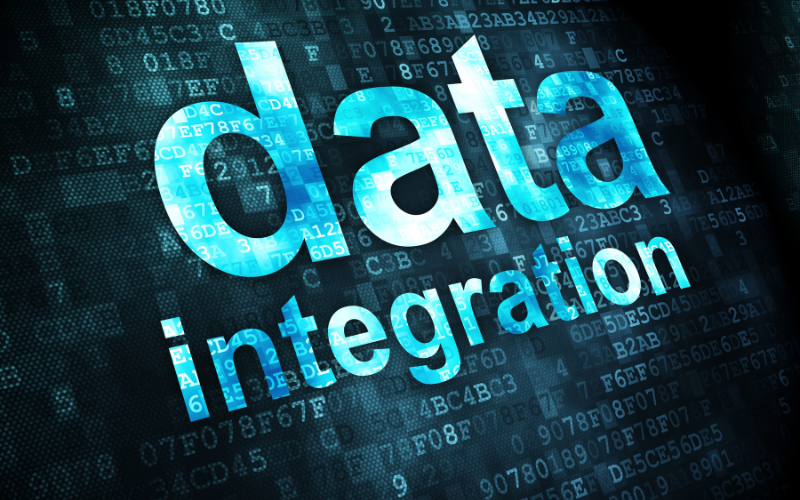When the word integration is raised in the context of business systems it is generally understood that it refers to making systems and services work together. But perhaps a formal definition of the word reveals one key reason why many integrations fall short of their potential:
Integration noun [u] ‘the action or process of combining two or more things in an effective way’ (Cambridge University Press, 2023)
An effective way, simply combining systems may satisfy a narrow definition of integration, but unless that combination is effective does it genuinely qualify as an integration?
In the history of Business IT systems, one name writ large is IBM, even the name of the company, International Business Machines tells of its purpose; and when those machines moved beyond typewriters and calculating machines, IBM designed and built the computer systems that became ubiquitous through the word. Even in those early days integration was key to utilising this new technology effectively as automated processes dovetailed into manual workflows.
When IBM System/38, the predecessor to today’s IBM Power Systems running IBM i, broke cover in 1978 it was perfectly placed to utilise the EDI networks which had become prevalent in the early 1970s to integrate businesses into ever more complex supply chains. It should come as no surprise then that the IBM i is a platform that can be integrated into workflows, processes, and businesses, and yet KFA Connect frequently encounters customers who have been told that this is either impossible or so expensive as to be prohibitive.

Why is this?
Even though many of the systems businesses seek to integrate are now delivered as cloud services, there are still a huge number of IT professionals, be they software developers, consultants, or users who are still firmly rooted in the world of Microsoft Windows and Unix/Linux systems; the IBM i operating system is often simply perceived as external, difficult, or legacy. We believe that this is not the case.
Whilst KFA Connect does not have a history as storied as IBM’s we have been working with the IBM i and its predecessors for over 25 years, this means we are familiar with it in a way that most IT professionals are not. Not only that, but we have also continued to develop our knowledge as the IT industry has developed and so when it comes to integrating the IBM i with a modern eCommerce system, for example, we are not simply comfortable, we are experienced.
How can we do this?
Just as computer technology has made quantum leaps since the 1970s, the last ten years even, so has the IBM i as a platform. Current versions of the operating system can interface with web systems in the same way as any commodity Linux or Windows system. Applications can be written in RPG and CL; or in any number of cross-platform languages, for example, Java or PHP, and these can integrate with other applications of web services using APIs, and file-based integration, all the same methods in fact as any other technology platform. In many of these instances, the IBM Power System with its advanced architecture can offer greater performance than a system running on the common x86 platforms. Integration can be built into an IBM application from its inception.

If integrating a new application is simple, then what about legacy applications?
This is typically what customers have in mind when they want to integrate their IBM i-based software into a new business process.
Because of its longevity and reliability, applications running on the IBM i may themselves, have their roots in bespoke development carried out decades in the past. Unlike other platforms, an application written for the AS400 in the 1980s could very well be running on a current model IBM i in 2023.
This longevity means new systems will have appeared that simply didn’t exist when the original application was written. A typical example of this would be implementing an eCommerce or multichannel system, or the move from office to remote and home working. How could legacy applications be integrated into these new systems?
Who should help with an Integration with the IBM i?
A multidisciplinary team with experience of both the IBM i platform, but also the systems to be integrated with is invaluable.
In this way, the experience gained on numerous similar projects can be reused, and hidden costs with specialists being contracted in can be avoided.
What needs to be integrated?
It is vital to establish the scope of any integration:
- What needs to be integrated?
- Is the integration one-way, or bi-directional?
This step is vital since there is a world of difference in the complexity of sending simple stock data to an eCommerce site from an ERP system; to fully integrating all functions of that ERP system on the eCommerce site. Many projects falter at the planning stage because a simple integration requirement gets conflated into something onerous and seemingly insurmountable.
What methods of integration are available?
The IBM i has a powerful SQL database integrated with it, this database DB2 is an intrinsic part of how IBM i can process data so efficiently. Using universal drivers (ODBC/JDBC) connections can be made directly to this database and data moved to and from the IBM i and partner systems quickly, in volume, and efficiently.
File-based integrations are still prevalent, and these frequently provide the backbone for many EDI (electronic data interchange) systems. Here data files or ‘messages’ are created on each system and then transferred securely to the partner systems. These files might be simple flat text, CSV documents and the like, or structured XML files; to an experienced integrator, the type poses no issue.
APIs were already ubiquitous before the rise in cloud computing, and with the rise of black-boxed microservices, these have become the de-facto method of integration when dealing with many systems. Sometimes heavily documented, sometimes not, these APIs are the defined interfaces between systems and often allow for deep integration with their attached system. Like so much in IT there are a multitude of types, from the SOAP XML-based interfaces, through the currently favoured REST APIs, to the flexible GRAPHQL endpoints used by the marketplaces of today. Whilst implementing an API may seem daunting, an experienced team will be completely comfortable with the technology.

Does this mean IBM i integration needs bespoke development?
Not at all, there are tools available that can simplify an implementation between systems where much of the heavy lifting has been built in advance. One such tool that KFA Connect use is Codeless Platforms’ BPA Platform, a business process automation platform where tasks can be built to accomplish integrations quickly and with the minimum of development. Here functions such as file transfer, scheduling, and even connection to many web services is available within the package. Using a toolset like this means that time to delivery can be dramatically cut.
We think our needs are more complex than that though.
Sometimes bespoke development is the right path, and when a team already has experience of all the fields required in an integration this makes good sense. Graphical dashboards delivered to end users can be built over the IBM i giving a modern, familiar way to interact with the underlying data. This is especially appropriate where business intelligence needs to be disseminated in a way that it can be quickly absorbed.

The same dashboards can also provide endpoints for web services both on the IBM i and on other systems within and without an organisation. This could provide a multichannel selling platform for example, with ERP data coming from the IBM i, product information data coming from a PIM system running in the cloud, products being sold from Amazon, eBay, and Shopify, and goods being despatched by a 3PL provider.
In conclusion, the IBM i has been at the heart of many business systems for many decades, far from being outmoded, it can work perfectly in the interconnected world in which we live. With the right technologies and team, an application that is helping to drive the success of a business can be integrated into other modern platforms to continue that success and drive it higher.
Joe Vavasour
KFA Connect, IT Manager
20th January 2023
Want to know more? Get in touch with our team today.



